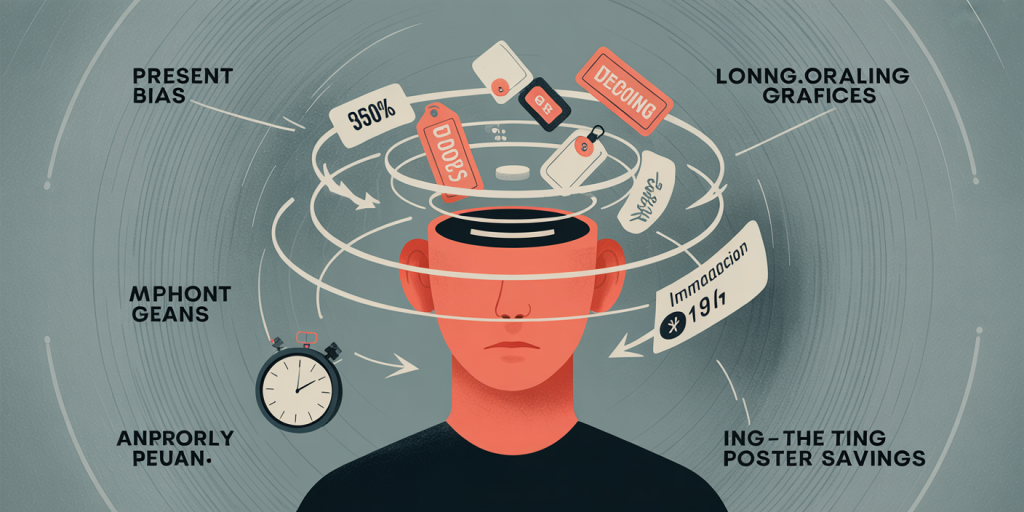The Psychology Behind Overspending and How to Fix It
Overspending is a common financial challenge affecting millions worldwide, yet its roots and remedies are embedded deeply in psychological factors. Understanding why individuals spend beyond their means requires more than just knowledge of budgeting—it involves exploring emotional triggers, cognitive biases, and social influences. This article dives into the psychological causes of overspending and offers practical, evidence-based strategies to regain control over personal finances.

Understanding the Emotional Triggers of Overspending
Psychological research suggests that overspending often stems from emotional needs rather than rational decision-making. Many people use shopping as a coping mechanism for stress, anxiety, or loneliness. Retail therapy, a well-known phrase, acknowledges this emotional link. The dopamine rush triggered by purchasing releases short-term pleasure, offering temporary relief from negative feelings.
Take, for example, the case of Sarah, a 29-year-old marketing executive who frequently makes impulse purchases after stressful days at work. Although she regrets these purchases later, the immediate gratification helps her momentarily feel better. This behavior aligns with findings from a 2020 study published in the *Journal of Behavioral Addictions*, which found that individuals exhibiting “compulsive buying disorder” often use shopping to regulate mood, despite financial consequences.
On the contrary, some overspending arises from the desire to boost self-esteem or social status. In the age of social media, where lifestyles are often curated for appearance, people may spend excessively to project an image of success or happiness. This phenomenon was highlighted in a 2021 Deloitte consumer report, which stated that 43% of consumers admitted to purchasing items primarily to impress others, a clear indicator of social influence on spending habits.
Cognitive Biases Influencing Spending Decisions
Cognitive biases can significantly impact financial behaviors by distorting rational judgment. One common bias is the “present bias”—the tendency to prioritize immediate rewards over long-term benefits. In practice, this means buying an expensive gadget now instead of saving for retirement, even when aware of future consequences.
Another bias is the “anchoring effect,” where consumers fixate on a specific price point. Retailers exploit this by showing a “discounted” price next to the original price, making the discounted sale seem irresistible and encouraging overspending. For example, a shopper might hesitate if a jacket is $200 but think twice if it’s marked down to $150 from $300, despite both still being costly relative to their budget.
A comparative table below demonstrates how cognitive biases manifest in spending versus saving decisions:
| Cognitive Bias | Effect on Spending | Effect on Saving |
|---|---|---|
| Present Bias | Prioritizes immediate purchase | Postpones saving for the future |
| Anchoring Effect | Influenced by perceived discounts | Ignores long-term interest rates |
| Confirmation Bias | Seeks information justifying purchase | Avoids confronting financial reality |
Understanding these biases is critical for developing strategies that encourage more mindful spending and improved financial health.

The Role of Social and Cultural Influences in Overspending
Social environments and cultural norms also heavily shape spending patterns. Peer pressure and the desire for acceptance can drive individuals to spend on luxury goods or experiences they might otherwise avoid. A notable case is the “keeping up with the Joneses” phenomenon, where individuals compare themselves with friends or neighbors and spend recklessly to match their lifestyle.
Research published in the *Journal of Consumer Psychology* (2019) showed that individuals exposed to images of affluent lifestyles increased their willingness to spend more money, illustrating the powerful impact of social comparison on spending behavior. Social media intensifies this effect by constantly exposing users to curated highlights, fostering unrealistic expectations about consumption and success.
Cultural factors also dictate spending behavior. In collectivist societies, spending on family and social ceremonies is often prioritized, sometimes at the expense of personal savings. For instance, in India, wedding expenses frequently lead to substantial debt, reflecting the cultural importance placed on these events, despite financial strain.
In contrast, individualistic societies may emphasize personal achievement and enjoyment, promoting spending on self-care or entertainment. Recognizing these cultural patterns is important for tailoring financial advice that respects individual contexts and motivations.
Practical Strategies to Combat Overspending
Addressing overspending requires a mix of cognitive and behavioral interventions tailored to individual psychological profiles. One effective strategy is developing financial self-awareness through tracking expenditures. Mobile apps like Mint and YNAB (You Need A Budget) provide real-time visualizations of spending, helping users recognize impulsive purchases and identify patterns.
Another approach involves setting clear, specific financial goals linked to personal values. For example, someone motivated by travel can allocate monthly budgets toward vacation funds. Research from *Psychology Today* (2023) found that goal-setting enhances motivation and reduces unnecessary spending by fostering a sense of purpose.
Cognitive behavioral techniques can help counteract emotional overspending. This includes implementing delays before purchases, such as waiting 24 or 48 hours to decide on non-essential items. This pause allows emotions to settle and promotes more rational decisions. Additionally, practicing mindfulness helps increase awareness of urges, thereby reducing compulsive buying.
Social support systems are equally important. Joining financial support groups, online communities, or consulting a financial therapist can provide accountability and emotional reinforcement, which are essential in sustaining behavioral change.
Financial Education and Its Impact on Spending Behavior
Lack of financial literacy is a significant contributor to overspending. Many individuals do not fully understand concepts such as interest rates, credit card debt, or investment options, leading to poor financial choices. A 2022 OECD report highlighted that only 52% of adults globally have basic financial literacy, underlining the scale of this issue.
Financial education programs tailored to psychological factors have proven effective in reducing overspending. For instance, community workshops that combine budgeting skills with stress management techniques show higher success rates compared to traditional financial courses alone.

Take the case of a credit counseling program in the United States that integrated emotional regulation training. Participants not only improved their debt-to-income ratio by 30% but also reported decreased anxiety related to money management.
Educational institutions can also play a pivotal role. Incorporating financial literacy into school curriculums equips younger generations with knowledge and habits that deter overspending. The National Endowment for Financial Education reports that students trained in money management are 20% less likely to exhibit overspending behaviors in adulthood.
Looking Ahead: Future Perspectives on Managing Overspending
The future of managing overspending lies in integrating technological advancements with psychological insights. Artificial intelligence-driven personal finance apps can now predict spending patterns and offer personalized interventions, making financial management more accessible and effective.
Behavioral economics will continue to shape approaches, incorporating nudges—subtle prompts that guide decisions without restricting freedom. For example, apps might suggest rounding up daily spends into a savings account or warn users when their spending exceeds typical patterns.
Moreover, as awareness grows around mental health and financial wellbeing, interdisciplinary support networks involving therapists, financial advisors, and social workers are increasingly necessary. This holistic approach addresses both the emotional and practical facets of overspending, promoting sustainable financial habits.
Societal shifts towards sustainability and minimalism may also influence future spending norms, encouraging consumers to prioritize value and reduce impulsive buying. Brands responding to this trend emphasize transparency and purpose, which can reshape consumer behavior positively.
In conclusion, overspending is a multifaceted issue rooted in psychological, social, and cognitive factors. By understanding these elements and applying practical strategies such as mindful spending, financial education, and supportive technologies, individuals can regain control of their finances and foster healthier money habits for the future.
